From the Chicago Reader (July 6, 2001). — J.R.

A collaboration between the living Steven Spielberg and the late Stanley Kubrick seems entirely appropriate to a project that reflects profoundly on the differences between life and nonlife, not to mention the human and the nonhuman. It’s easy to say that Kubrick thought about questions that Spielberg only knows how to approach emotionally, but that surely oversimplifies the range of both filmmakers. A more accurate way of putting it would be to say that Kubrick started this picture and came up with the idea that Spielberg should direct it, and after inheriting a 90-page treatment Kubrick had prepared with Ian Watson and 600 drawings he’d done with Chris Baker, Spielberg finished it in so much his own manner that it may be his most personal film, as well as his most thoughtful. It nonetheless delivers more of a posthumous statement from Kubrick than I would have believed possible, a sequel to 2001: A Space Odyssey and even Eyes Wide Shut (with an equally offbeat view of New York) as well as Close Encounters of the Third Kind and E.T. the Extra-Terrestrial. A film that might make you cry, it’s just as likely to give you the creeps afterward, which is as it should be. Read more
From the Chicago Reader (December 1, 1987). — J.R.
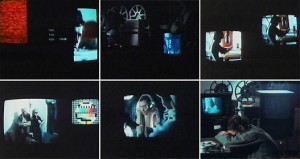
Often juxtaposing or superimposing two or more video images within the same ‘Scope frame, Jean-Luc Godard’s remarkable (if seldom screened) 1975 feature — one of the most ambitious and innovative films in his career — literally deconstructs family, sexuality, work, and alienation before our very eyes. Our ears are given a workout as well; the punning commentary and dialogue, whose overlapping meanings can only be approximated in the subtitles, form part of one of his densest sound tracks. Significantly, the film never moves beyond the vantage point of one family’s apartment, and the only time the whole three-generation group (played by nonprofessionals) are brought together in one shot is when they’re watching an unseen television set. In many respects, this is a film about reverse angles and all that they imply; it forms one of Godard’s richest and most disturbing meditations on social reality. The only full ‘Scope images come in the prologue and epilogue, when Godard himself is seen at his video and audio controls. In French with subtitles. 88 min. (JR)
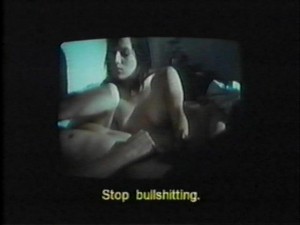 Read more
Read more
From the Chicago Reader (June 30, 2006). — J.R.

This superb 1950 tragedy about a former gunfighter (Gregory Peck in a handlebar mustache) trying to shake off his violent past and its attendant celebrity doesn’t have the sort of reputation among auteurist critics that it deserves, largely because it was directed by the out-of-fashion Henry King. But it’s one of the earliest and best antiwesterns, made before the subgenre became self-conscious about critiquing the standard myths. Some that followed are merely contrary; this has the ring of truth. William Bowers and William Sellers collaborated on the script; with Helen Westcott, Millard Mitchell, Jean Parker, Karl Malden, and Skip Homeier. 85 min. Also on the program: Daffy Doodles (1946), a Daffy Duck and Porky Pig cartoon by Robert McKimson. Sat 7/1, 8 PM, LaSalle Bank Cinema.
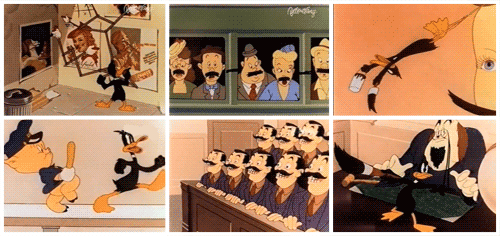 Read more
Read more
A program note written for the London Film Festival in 1976, held at the National Film Theatre in November. On November 17, at the first of two screenings, Duelle appeared as a double bill with the world premiere of Noroît, which was shown immediately afterwards, with Rivette in attendance. –- J.R.
Twhylight (Duelle)
FRANCE 1975

Labelled the second feature in [Jacques] Rivette’s four-part Scènes de la Vie Parallèle, Duelle is in fact the first to be completed. Like all the films in the projected series, it covers the ‘Carnival’ period between the last new moon of winter and the first full moon of spring: the only time when goddesses can appear on earth and have commerce with mortals. These goddesses are split between moon ghosts and sun fairies; in Duelle, we find a ghost (Juliet Berto) and a fairy (Bulle Ogier) competing for possession of a diamond known as the Fairy Godmother which can keep them on earth past their allotted forty days.With a non-existent word (the female form of a masculine noun) as title and an imaginary muth as starting-point, Duelle deliberately defines itself through contradictions and clashes, maintaining a perpetual disequilibrium of elements that equally flirts with and refuses the comforting balances of ‘classic’ narrative. Read more
From the Chicago Reader (November 2, 2001). — J.R.

K-Pax
**
Directed by Iain Softley
Written by Charles Leavitt
With Kevin Spacey, Jeff Bridges, Mary McCormack, Alfre Woodard, David Patrick Kelly, Peter Gerety, Saul Williams, and Celia Weston.
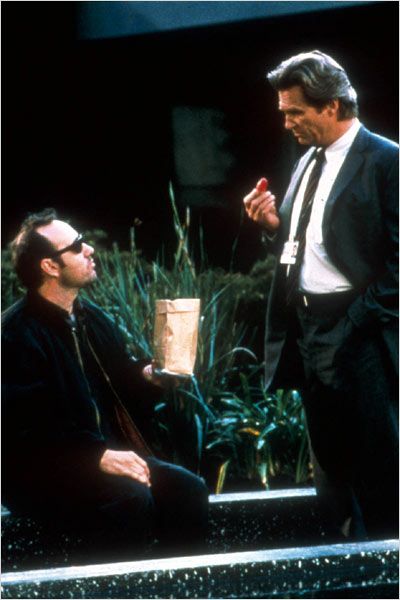
The last chapter of Robert Lindner’s best-seller The Fifty-Minute Hour, which I read when I was a teenager, was the first thing I was reminded of while watching K-Pax, a movie about a New York shrink at a psychiatric hospital (Jeff Bridges) treating a brilliant man (Kevin Spacey) who calls himself Prot and claims to come from a planet called K-Pax. In each story a psychiatrist finds himself seduced into half believing the SF projections of one of his patients, and part of the allure of that setup — like the case studies in an Oliver Sacks collection — is that we’re invited to flirt with the poetic notions behind some of its suppositions.
Based on a novel by Gene Brewer and written by Charles Leavitt, I can’t discount the undeniable pleasure of watching Spacey and Bridges act up a storm, but a lot of what makes this movie watchable and compelling is precisely what’s bogus about it: it gives in to a desire to generalize about people who are mentally ill — a group that doesn’t necessarily include Prot — and to feel satisfied and astute about those generalizations. Read more
From the Chicago Reader (January 26, 1996). — J.R.
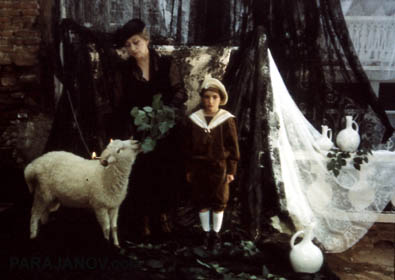
This program of 35-millimeter experimental films selected by Bruce Posner is a mixed bag, though there’s no denying the intensity of the works. That may be part of the problem: including musical interludes between clusters of films is a good idea, but it backfires because two of the interludes are as aggressive as the films, denying us a contemplative moment when we might catch our breath. But I can still think of two good reasons for seeing this show. There’s an awesome eight-minute fragment by Sergei Paradjanov, literally made on his deathbed, called Confession (1990) that easily surpasses his last two features and deserves to be ranked alongside his sublime Sayat Nova; it centers mainly on a long take juxtaposing a group of musicians (whose music is unheard), an apparent funeral, and various ritualistic activities — all happening at once in the same hallucinatory space in a way that recalls juxtapositions in medieval paintings. And then there are the dated but undeniably lively silent abstract expressionist works made between 1967 and 1992 by Stan Brakhage, the best of which are Night Music (1986) and The Dante Quartet (1987), where the tempi are sufficiently varied to justify the poetic and musical analogies implied in the titles. Read more
From the Chicago Reader (December 9, 1988). — J.R.
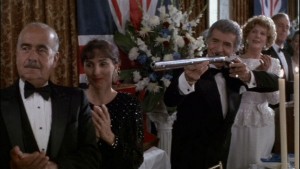
THE NAKED GUN: FROM THE FILES OF POLICE SQUAD!
** (Worth seeing)
Directed by David Zucker
Written by Jerry Zucker, Jim Abrahams, David Zucker, and Pat Proft.
With Leslie Nielsen, George Kennedy, Priscilla Presley, Ricardo Montalban, O.J. Simpson, and Nancy Marchand.
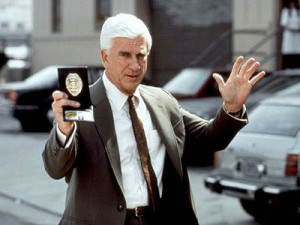
Unlike some of my colleagues, I find the latest comedy by David Zucker, Jim Abrahams, and Jerry Zucker (the ZAZ team) a notch below their previous Airplane! (1980) and Top Secret! (1984). This shouldn’t matter much to anyone looking for an irreverent, anything-goes farce with a fair number of laughs; The Naked Gun is certainly that, and I don’t intend for the following to scare anyone away from it. But I do want to consider what’s been happening to the ZAZ team’s distinctive brand of satire over the past eight years.
All three ZAZ movies use as their point of departure the crystallized form of some bad formula movie. The lead characters wear deadpan expressions through their cliche roles, and the laughs derive largely from non sequiturs in their dialogue and from lunatic gags that surround them as they trudge through their routine plots, impervious to the silliness.
Airplane! stuck to this pattern pretty consistently, lampooning the disaster blockbusters of the 70s like Earthquake, the Airport sequels, and The Towering Inferno. Read more
From a 1989 catalog that I did for the Walker Art Center, Cinema Outsider: The Films of William Klein. — J.R.
William Klein on His Film Work
Klein made the following remarks in a telephone conversation with Jonathan Rosenbaum in early November 1988.

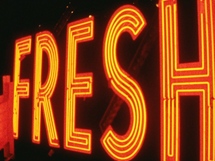
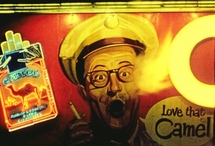
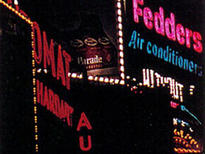
On Broadway by Light (1958) and Orson Welles
I did this book on New York: black-and-white, grungy photographs. People said, ‘What a put-down — New York is not like that. New York is a million things, and you just see the seamy side.” So I thought I would do a film showing how seamy New York was, but intellectually, by doing a thing on electric- light signs. How beautiful they are, and what an obsessive, brainwashing message they carry. And everybody is so thankful for this super spectacle. Anyway, I think it’s the first Pop film.
Afterwards, I went from New York to Paris on a boat. We were on the pier with all our suitcases when I saw Orson Welles with a cigar and a little attaché case – that’s all he had as luggage. I went up to him and said, “Listen, I’ve just shot a film. Would you like to see it?” I showed it to him in the boat’s movie theater, and he said, “This is the first film I’ve ever seen in which the color is absolutely necessary.” Read more
From Wide Angle, vol. 8, no. 3-4, 1986. –- J.R.
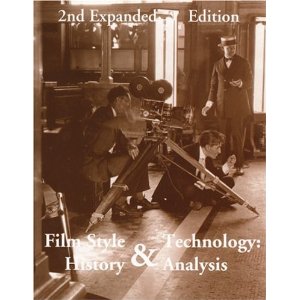
FILM STYLE AND TECHNOLOGY:
HISTORY AND ANALYSIS by Barry
Salt, Starword, 3 Minford Gardens,
London W14 0AN, England, 1983:
paper, $ 15.00, 408 pages, lllustrations
It is a sad commentary on the
narrowness and inflexibility of current
academic publishing in film studies
that this major work had to be brought
out at the author’s own expense.
Handsomely produced and generously
priced, Film Style and Technology:
History and Analysis offers what is
conceivably the most detailed account
of film technology that we have had to
date, stretching from 1885 through the
Seventies, with roughly one chapter per
decade, and for this aspect of the book
alone, no comprehensive library devoted
to film history can afford to be without it.
In addition, the book’s innovative use of
statistical style analysis, while
problematical in relation to certain stylistic
issues, nevertheless introduces a new form
of rigor to film analysis that deserves to be
considered in detail.
If, as a “total” view of cinema, Salt’s approach
often seems constricted, it nonetheless yields
a wealth of potentially useful material to many
different kinds of film scholars. As Salt’s title
makes clear, a technological history of film
represents only one part of his enterprise. Read more
From the Chicago Reader (December 16, 1994). — J.R.

Red
**** (Masterpiece)
Directed by Krzysztof Kieslowski
Written by Krzysztof Piesiewicz and Kieslowski
With Irene Jacob, Jean-Louis Trintignant, Frederique Feder, and Jean-Pierre Lorit.
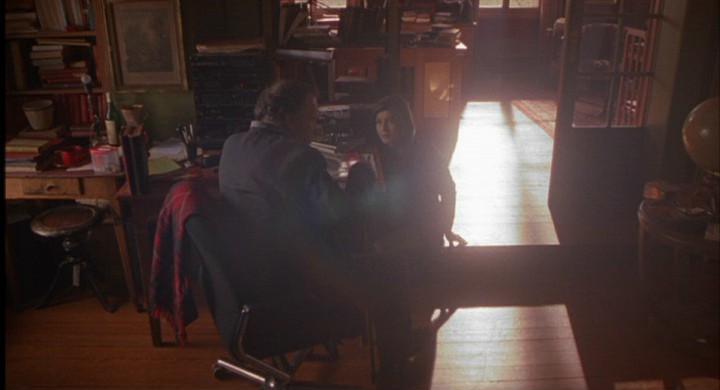
A film of mystical correspondences, Red triumphantly concludes and summarizes Krzysztof Kieslowski’s “Three Colors” trilogy by contriving to tell us three stories about three separate characters all at once; yet it does this with such effortless musical grace that we may not even be aware of it at first. Two of the characters are neighbors in Geneva who never meet, both of them students — a model named Valentine (Irene Jacob) and a law student named Auguste (Jean-Pierre Lorit )– and the third is a retired judge (Jean-Louis Trintignant) who lives in a Geneva suburb and whom Valentine meets quite by chance, when she accidentally runs over his German shepherd.
Eventually we discover that Auguste and the retired judge are younger and older versions of the same man (neither of them meet, either). Another set of correspondences is provided when, in separate scenes, Valentine and the judge are able to divine important facts about each other: he correctly guesses that she has a younger brother driven to drug addiction by the discovery that his mother’s husband is not his real father; she correctly guesses that he was once betrayed by someone he loved — which also happens to Auguste during the course of the film. Read more
From the Chicago Reader (June 17, 1994). — J.R.
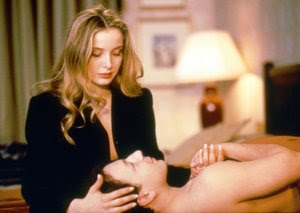
** WHITE
(Worth seeing)
Directed by Krzysztof Kieslowski
Written by Krzysztof Piesiewicz and Kieslowski
With Zbigniew Zamachowski, Julie Delphy, Janusz Gajos, Jerzy Stuhr, Grzegorz Warchol, and Jerzy Nowak.

“Imagine a kind of filmmaking that’s truly in tune with the ways you think and relate to other people. A deeply humane kind of filmmaking, but free from ‘humanist’ lies and sentimental evasions. Not a dry, ‘realistic’ kind of filmmaking, but one in which all the imaginative and creative efforts have gone into understanding the way we are. A kind of filmmaking as sensitive to silence as to speech, and alert to the kind of meanings we prefer to hide away. To my knowledge, only two directors in the world are currently making films like that. One is Krzysztof Kieslowski in Poland. The other is Edward Yang in Taiwan.”
These rousing words by Tony Rayns in the June issue of Sight and Sound were just what I needed to read after returning last month from Cannes, where wonderful films by Yang and Kieslowski about contemporary life were showing in competition. They were the two best competing films that I saw, though neither won any prizes. Read more
From the Chicago Reader (February 11, 1994). — J.R.

*** BLUE
(A must-see)
Directed by Krzysztof Kieslowski
Written by Kieslowski and Krzysztof Piesiewicz
With Juliette Binoche, Benoit Regent, Florence Pernel, Charlotte Very, Helene Vincent, Emmanuelle Riva, and Philippe Volter.
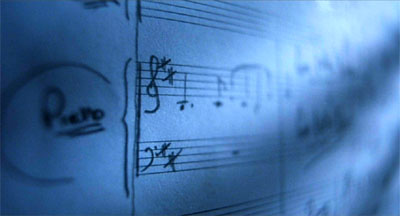
Indisputably the work of a master, to a much greater degree than anything else around at the moment, Krzysztof Kieslowski’s first feature without reference to his native Poland is sufficiently contemporary and allegorical to take the future of Europe, and a “unified” Europe at that, as one of its themes. Palpably concerned with loss and regeneration, suffering and transcendence, Blue calls to mind some of the better late works of Ingmar Bergman in its powerful sense of dramatic concentration; it doesn’t have quite the undertow of neurosis that presumably made those films so exemplary for Woody Allen, but it does have a much bolder grasp of the movements and vagaries of consciousness.
In the opening moments of Blue the leading character, Julie (Juliette Binoche), loses both her husband, a famous French composer, and her five-year-old daughter in a car crash; the remainder of the film charts her mental and spiritual recovery. The film’s remarkable economy is already apparent in the opening shot — a close-up of the spinning right front wheel of the car, seen from behind, as it speeds down a highway. Read more
I’ve appended a different title to this Chicago Reader review which ran on July 11, 2003 and restored a few details in my argument as well as phrases that a bleary-eyed editor, foregoing the Reader’s usual writer-friendly protocol, deleted at the last minute without telling me. Down with Love, in particular, continues to be a major revelation and source of pleasure for me. — J.R.
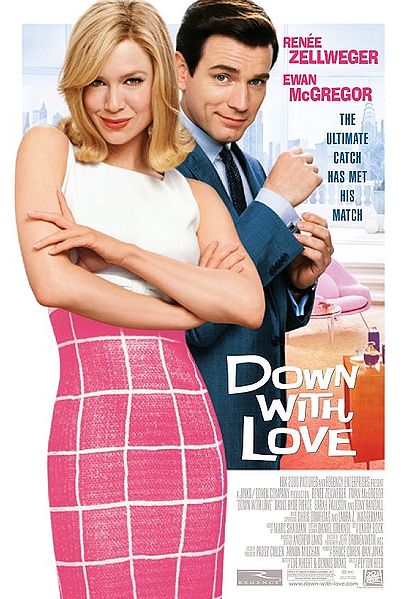
Down With Love
**** (Masterpiece)
Directed by Peyton Reed
Written by Eve Ahlert and Dennis Drake
With Renee Zellweger, Ewan McGregor, Sarah Paulson, David Hyde Pierce, and Tony Randall.
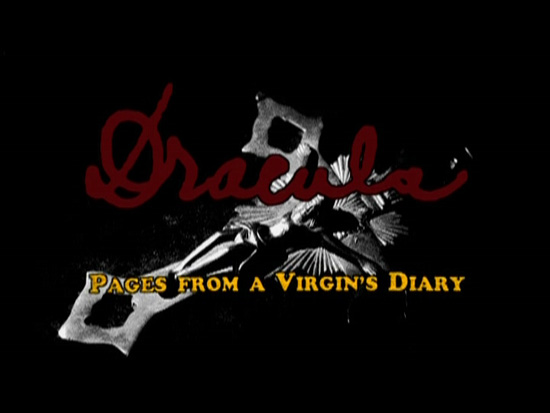
Dracula: Pages From a Virgin’s Diary
*** (A must-see)
Directed and written by Guy Maddin
With Zhang Wei-qiang, Tara Birtwhistle, David Moroni, CindyMarie Small, Johnny Wright, and Brent Neale.
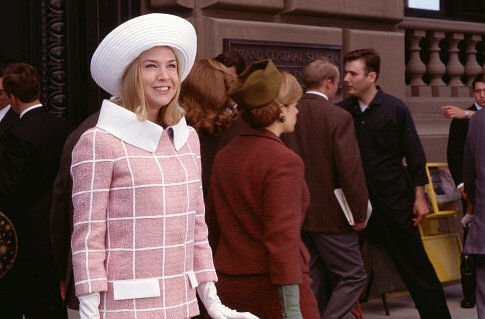
If a more interesting and entertaining Hollywood movie than Down With Love has come along this year, I’ve missed it. Down With Love — which has already closed in Chicago — is entertaining thanks to Eve Ahlert and Dennis Drake’s clever script, Peyton Reed’s mainly assured direction, inventive production and costume design, a musical number behind the final credits I’d happily swap all of Chicago for, and even a miscast Renee Zellweger pulling off a difficult climactic monologue. Read more
I originally planned to include this essay in one of my collections, but eventually changed my mind. It’s an embattled Sight and Sound piece that appeared in their Winter 1976/77 issue and was written towards the tail end of my two and a half years on the staff of that magazine, shortly before I returned voluntarily to the U.S. to accept a short-term teaching job replacing Manny Farber in a San Diego suburb.
In this piece, I castigated mainstream critics for sneering at both the psychoanalytical film theory being practiced at the time at Screen and experimental filmmaking (the focus of each of the two weeks at that year’s Edinburgh Film Festival), at the same time I castigated the organizers of (and many participants in) those two Edinburgh events for various other kinds of narrowness and conformity. What was consciously if paradoxically intended by me as some form of bridge-building between warring factions was in some ways also a kind of bridge-burning, locating myself in the precise middle of the same makeshift and disintegrating bridge I was supposedly trying to construct. In any case, after going to the trouble of retyping this very lengthy report, I found myself too alienated from most of its approach to reprint it in a collection of mine. Read more
This appeared in the May 28, 2004 issue of Chicago Reader. Coffee and Cigarettes, incidentally, proved to be one of the surprise hits of Jarmusch’s career — not as commercially successful as the subsequent Broken Flowers (though I prefer it to that), but more popular than anticipated. The overhead shots of expresso cups in a more recent Jamusch feature, The Limits of Control, recall those in Coffee and Cigarettes — providing even more of a contrast with some of the weird, transgressive, and uncharacteristic camera angles in the more recent film, starting with the very first shot. (Note: the first photograph below is by Jean-Daniel Beley, who has requested a credit.)—J.R.
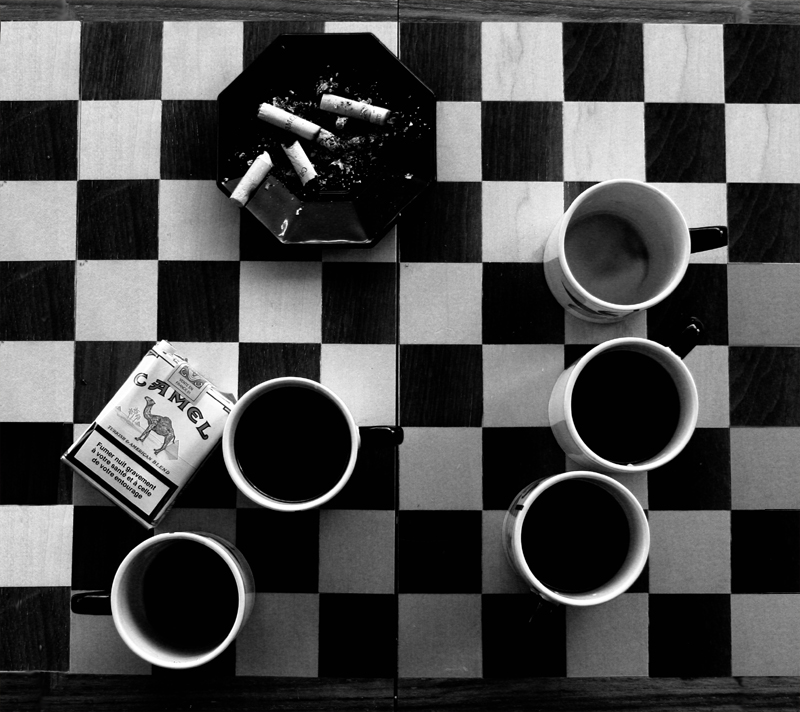
Coffee and Cigarettes
*** (A must-see)
Directed and written by Jim Jarmusch
With Roberto Benigni, Steven Wright, Joie Lee, Cinqué Lee, Steve Buscemi, Iggy Pop, Tom Waits, Joe Rigano, Vinny Vella, Vinny Vella Jr., Renee French, E.J. Rodriguez, Alex Descas, Isaach de Bankolé, Cate Blanchett, Jack White, Meg White, Alfred Molina, Steve Coogan, GZA, RZA, Bill Murray, Bill Rice, and Taylor Mead.
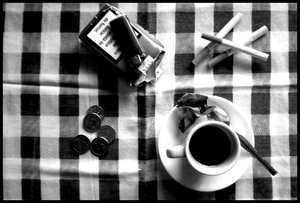
At first Jim Jarmusch’s Coffee and Cigarettes, made over a span of 17 years, looks like a departure for him. It consists of 11 entertaining, mainly comic short films in black and white that show people mainly sitting around in coffeehouses mainly drinking coffee, mainly smoking cigarettes, and mainly talking. Read more



























